Peck, Ratmansky and the Future of American Ballet
June 16, 2023
The legacy of American ballet begins not in America, but in Russia. The year is 1904 and Georgiy Melitonovich Balanchivadze, better known as George Balanchine, is born. The son of a composer, Balanchine joined the Imperial Ballet School at age nine. Shortly after, he began to choreograph ballets and dance across Europe as a member of the Ballets Russes. In 1933, Lincoln Kirstein invited Balanchine to come with him to America to found a modern, resident ballet company in New York City. At the time, Balanchine was living a hard life in the Soviet Union, so when Kirstein presented an invitation to join him in America, it was an offer Balanchine could not refuse.
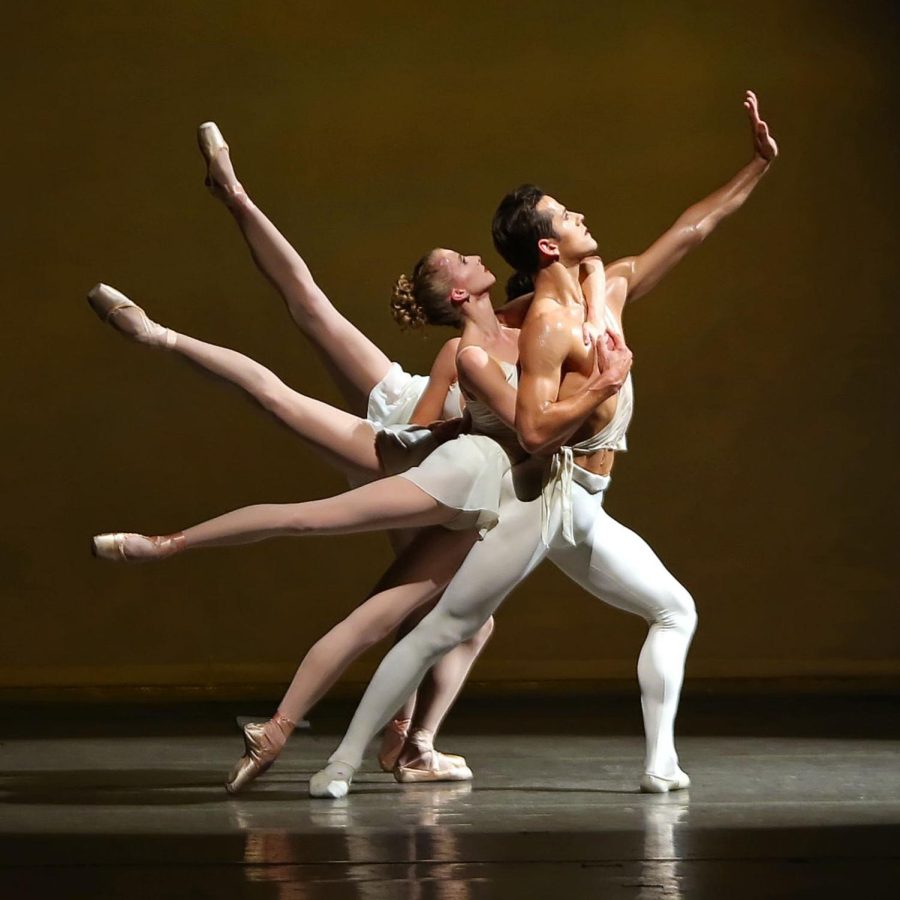
‘But first, a school’
Upon arriving in New York, Balanchine reportedly said to Kirstein, “but first, a school,” and together they formed the School of American Ballet. The school, which still operates today, opened its doors in 1934 and trains dancers to have the necessary skills to perform Balanchine’s ballets. If selected to perform Balanchine’s works professionally, after training at SAB, the dancers were ready to do so.
Kirstein’s vision became reality with Balanchine by his side when they founded the New York City Ballet in 1948. A year later Balanchine hired dancer and Broadway choreographer Jerome Robbins as Associate Artistic Director. Over the years Robbins contributed many ballets to the company, many to the compositions of Frédéric Chopin.
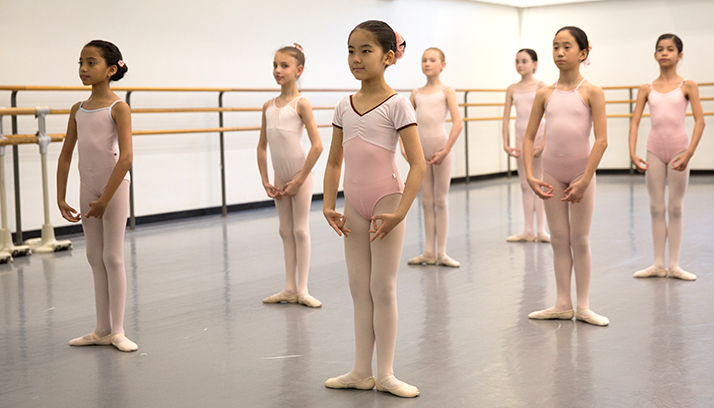
Balanchine in America
To understand the importance of Balanchine and Kirstein’s company in the United States, we have to understand that at this time ballet was mainly a European art form. Ballet was not familiar to Americans as it is today. There were a few traveling dance troupes, but they were all performing ballets from Europe and had no true identity to distinguish between them. In 1933, San Francisco Ballet became the first ballet company to hold residence in a single location, but they did not have a choreographic identity.
Beginning with “Apollo” and then “Serenade,” as Balanchine’s first ballets choreographed in America, audiences and reviewers were in awe of NYCB and the new “Balanchine ballet.” They had never seen anything like it before. Balanchine was like the Beatles: world-changing.
His dancers’ athleticism allowed them to achieve extreme physical feats with grace. The way the dancer seemed to be playing the music in Balanchine’s ballets contrasted the more placed-pose type dancing popular in Russia at the time. Lastly, the speed of Balanchine’s ballets was never seen before in ballet. His dancers would leap and jump with such precision, always high energy. It is these attributes that defined American ballet.

At the Precipice
NYCB has been maintaining Balanchine’s legacy since. Now, as we approach the company’s 75th anniversary, the company is finding itself at a pivotal point. Balanchine and Kirstein are dead and very few dancers who actually worked with Balanchine remain. We are seeing the first generation of dancers, choreographers, artistic directors and teachers to have not met the illustrious choreographer, affected by his legacy only indirectly. Just recently, the company is starting to break out of its secluded bubble.
After Balanchine and Robbins, in 2014, Justin Peck, a soloist with NYCB at the time, was an up-and-coming choreographer after achieving success at the New York Choreographic Institute.
Peck’s early for NYCB, “In Creases” and “Year of the Rabbit,” were popular, but his choreographic style made him stand out. Using musicality, speed and athleticism — characteristic of Balanchine’s pieces — Peck began to incorporate percussive movement reminiscent of tap dance. I would describe Peck’s choreography as movement that is always swirling or spinning. You will not see much stationary movement in a true Peck-style ballet.
Peck became the second person to serve as “Resident Choreographer” at NYCB and retired from dancing in 2019 to become a full time choreographer. Peck is a longtime and frequent collaborator with Sufjan Stevens, whose song “Mystery of Love” was featured in the film “Call Me By Your Name” and nominated for an Academy Award in 2018 for Best Original Song.
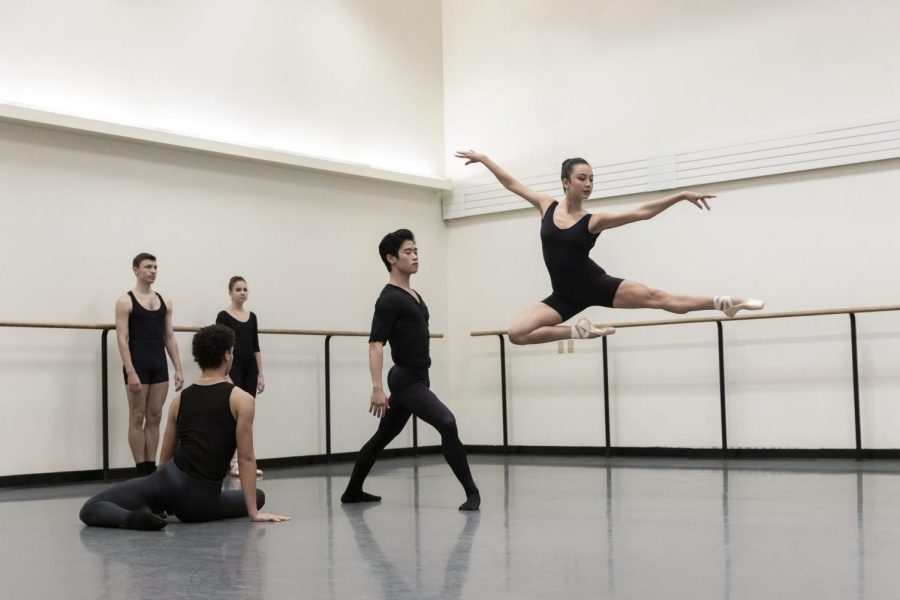
At this time, the company was mainly doing Balanchine ballets, with a few of Robbins’ works sprinkled in. There was the occasional ballet from an overseas choreographer or an NYCI collaboration. It was rare for a new ballet to be introduced, and few were choreographed by NYCB regulars. But Peck was something new: he was trained in the Balanchine style and came from the company.
In January of 2023 NYCB announced that Alexei Ratmansky would be joining the company as Artist in Residence. Born in Russia, Ratmansky was the director of the Bolshoi Ballet from 2004 to 2008. Since then, he has choreographed around the world, including for American Ballet Theatre, America’s most known classical ballet company. Ratmansky has previously choreographed for NYCB, and now that he has been given the “Artist in Residence” title, we not only see an outsider join the club, but we also see someone sharing the spotlight with the NYCB golden boy that Peck has become.
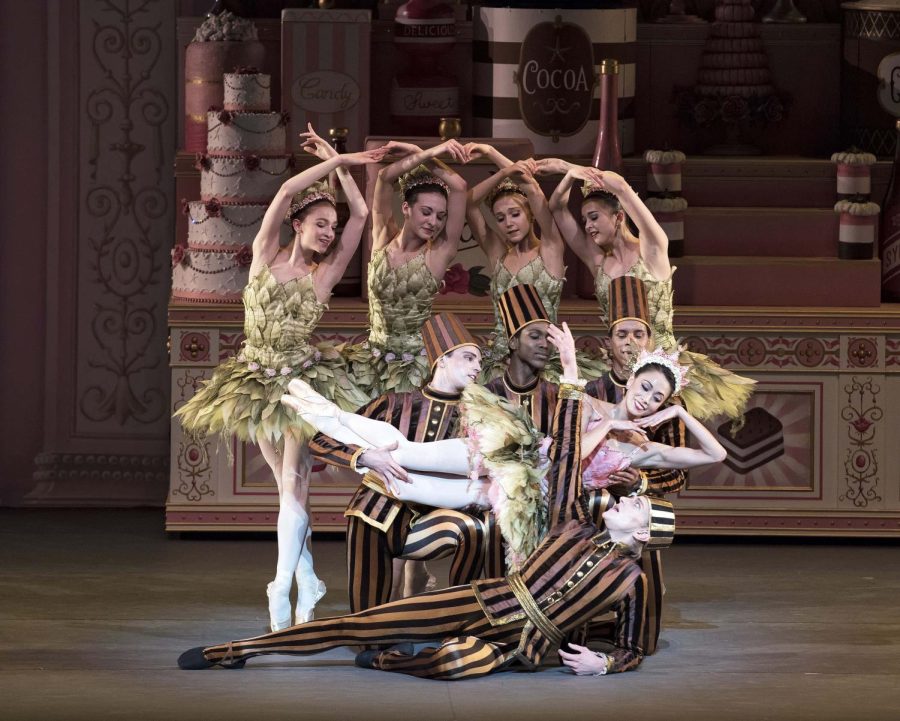
The First Full-Length Ballet
In January of 2023, Peck premiered his first full-length ballet for NYCB, “Copland Dance Episodes.” This ballet was the first plotless full-length ballet to come from NYCB since Balanchine’s “Jewels” in 1967.
“Copland” seems like the final test of Peck as a choreographer. The ballet springs off of one of Peck’s previously successful ballets, “Rodeo: Four Dance Episodes,” using more of composer Aaron Copland’s iconic score, new costumes by Ellen Warren and curtain drops by painter and sculptor Jeffrey Gibson.
Peck’s first full-length work puts his artistic vision alone in charge of entertaining an audience for a full hour and 16 minutes. The whole experience of the theater goer that day would be fully orchestrated and designed by Peck, leaving the question if his work could stand by itself.
My Own Experience
I have seen NYCB perform Peck’s “The Times are Racing” and “Pulcinella Variations” during the company’s yearly season at the Kennedy Center in Washington, DC. While both ballets have very interesting costume design and beautiful moments, I found both ballets to have an inconsistent ebb and flow for their approximately 30 minute length.
Spending a week in New York City in early May this year, I attended a NYCB performance of “Copland Dance Episodes” at the David H. Koch Theater. I loved the ballet and think it showcased the individuality of the dancers well, had beautiful music, and kept great pacing making a wonderful evening of ballet. This ballet cemented in my mind that if Peck wants to continue working with the company, he’ll have a spot there for years to come. However, I wouldn’t say Peck’s ballets display what people find so endearing about Balanchine’s ballets. While Peck might be our closest modern-day alternative, I don’t believe he is a close replacement.
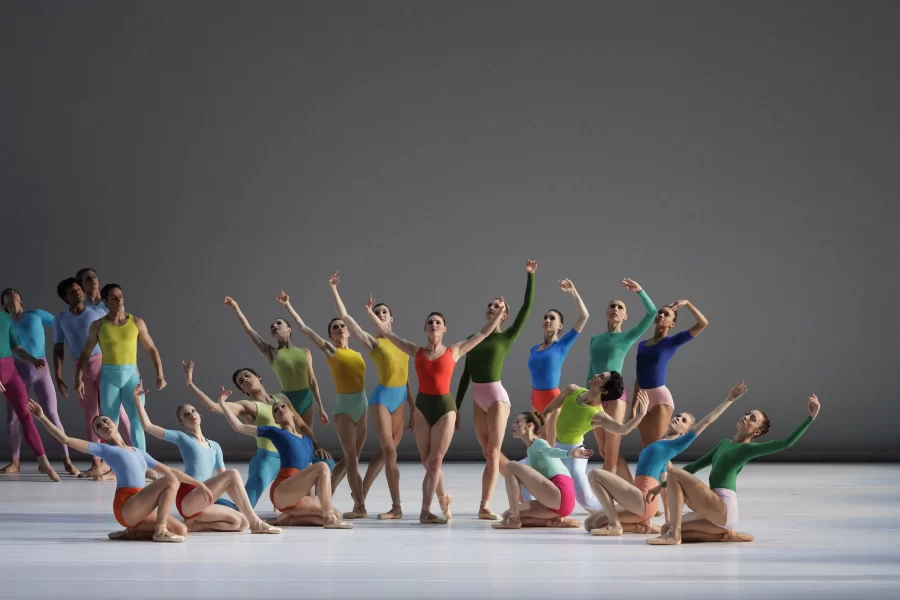
Looking to the Future of American Ballet
Ratmansky and Peck are going to be the ones to watch, with more and more choreographers stepping up every season at the NYCB. As the ballet takes on choreographers with different styles, training and influences other than Balanchine, then the pinnacle, home, protector of his work won’t be anymore. Yes, I’m being a bit dramatic and extreme, but as time continues to pass, NYCB will have to make the hardest decision of them all: trail blaze and progress, or continue in tradition.
As a Peck ballet is titled, “The Times Are Racing,” and as the world changes, it will be harder and harder for Balanchine to stay relevant as the art form keeps moving forward. The balance between Balanchine’s legacy and ballet’s legacy is swaying.









Brenda Du Faur • Jun 17, 2023 at 7:37 pm
I think former member of the N.Y.C.B. John Clifford would be a great additional choreographer for the New York City Ballet. He’s brilliant!
(Be sure to get his very good book, “Balanchine’s Apprentice”.)
Mr. Clifford choreographed 8 ballets for Balanchine, 7 ballets for S.A.B. (School of American Ballet).
It would be so great for N.Y.C.B. to get some of them!
Clifford should be given high regard because he is a WONDERFUL choreographer in his own right (some clips of his work are there on his instagram;
one such one blew me away for its sheer, intricate, flowing beauty of choreography and performed to perfection by a beautiful ballerina and danseur but I can’t remember the name of the ballet or names of the dancers and I couldn’t find them again when I went back and looked for it because Mr. Clifford’s instagram site is so prolific!!)
Mr. Clifford choreographed many ballets for Balanchine and for his own Los Angeles Ballet he choreographed over 50 ballets!
Not to mention that Clifford has great knowledge of Balanchine and Balanchine’s ballets and still has great energy to continue to impart that and would be a great asset to the school.
Not to mention that Clifford’s ballet, “Reveries” (later titled by Balanchine, “Tchaikovsky Suite No. 1”), which he choreographed for Balanchine was such a very beautiful ballet – to name just one – and it should be revised (and the choreography tried to be remembered by putting Gelsey Kirkland, Johnna Kirkland, and John Clifford in a studio room and others who have danced it to piece it back together) and N.Y.C B. should put it in its repertory!
Sometimes there is personality or in-company political intrigues in this world that can separate people instead of people honoring each other and everyone being pulled together for the one great, sacred purpose of servicing ballet and making it as splendid as it can be;
getting past personality frictions and getting on with letting worthy contributors contribute should be the name of the game and rule the day.
And former greats like Allegra Kent, Mimi Paul, Suzanne Farrell – and others – should absolutely be utilized and greatly respected and given the opportunities for their formidable contributions while the world is lucky enough to still have them living on earth.
I have to familiarize myself with the ballets of Peck and Romansky. A few glimpses on youtube I had of some of their pieces I liked very much and a few glimpses I didn’t.
All I can say is that as an avid balletomane for over 60 years of course there has to be new blood, new innovations, new paths, new “juices”, new creations, new manifestations.
But sometimes when things get too so-called modern I just really don’t like it. It bores me. There’s sometimes those full body, one-piece unitard leotard costumes (so-called) of so-called modern ballets which I find so unaesthetic for the most part and just other aspects to that modern ballet that leaves me very dry, and other types of modern ballet and modern dance even with other types of costumes that are not the body-tards aren’t good either.
Sometimes those types of works just seem awful to me and I don’t mean I don’t like them because they don’t have a story line. I mean because I find them flat and un-pretty or un something; as if the choreographer was being self indulgent;
that is to say, carrying out some kind of artistic output for a creative concept or experiment of his own personal playing around but not actually creating something that would be genuinely liked by an audience or genuinely resonate with them or make them feel this wonderful way of deep nourishment when they leave the theater.
Of course, that’s making generalizations when you aren’t specifically citing the particular ballets you’re alluding to and you have to have a large base of seeing alot of the works of the choreographers before you can render a truly meritful opinion.
But I don’t live anywhere close to New York so I can’t see the company perform live and see the full everythings.
But, suffice it to say, I think most would agree that the Balanchine repetoire should be preserved (and performed with adherence to how Balanchine wanted it to be) and then have the other half of the giant oak tree branching out into many different kinds of beautiful directions with other choreographers.
Personally, if it has to be so-called modern, I am more inclined to so-called modern BALLET as opposed to modern DANCE because the full classical ballet technique is the higher beauty I feel so should be the base at N.Y.C.B. from which everything springs.
(But modern dance has its place. I’ve seen wonderful things from Momix and many other things of both modern dance and modern ballet from different companies that were incredible.)
(I vaguely remember Nureyev performing some modern piece in a documentary about him when he was earlier in his career which was mesmerizingly beautiful;
just incredible, unique modern dance choreography and incredibly wonderful Nureyev in peak form and absolutely gripping in his total commitment, focus, and surrender to the choreography. He looked so gorgeous in it.)
(I think of Nureyev later in his career when he retired from the rigeurs of classical ballet and went into modern and him doing the Moore’s Pavanne. God help us! So awful. Not necessarily that Nureyev danced badly but that is exactly the kind of modern piece I hate! Better to just take a sleeping pill;
but really you couldn’t see if he was dancing goodly or badly because of that giant cape that covered him from neck to ankles! Covering Nureyev up. A sacriledge! But it didn’t really matter because the dancing was so minimal and so dull.)
(And of course the wonderfulness of Twyla Tharp and Barishnikov.)
( I HAVE to say that you can get great things from any forum or domain. On youtube, I think it was a Chinese dance/multi-forms performance company that made the famous four swans crossed arms, hand holding piece from Swan Lake into frogs instead of swans but using the same music;
brilliant! Brilliant! Absolutely incredibly clever and innovative choreography. The Chinese dancers performed the whole piece upside down – on their HANDS! It was unbelievable! And it was totally balletic!)
(I HAVE to mention that a Chinese multi-forms dance company I also saw on youtube- I don’t know if it’s the same company – had a spectacular version of Swan Lake. UNFORGETABLE. Totally classical ballet and totally Swan Lake but with a sort of cirque de Solei-ness to it;
…the ballerina did a splendid and IMMORTAL arabesque promenade on her danseur partner’s head! It was sublime. The look on the ballerina’s face when she takes her bow at the end of the ballet says it all. It was a look of absolute exhausted angelic and astounding accomplishment;
it instantaneously told you the enormous thing she had just accomplished in her performance of that Swan Lake and the incredible, unthinkably hard work that went behind it.)
I guess I’m having a criss crossing narrative with myself!
So good is good in any form of movement and bad is bad.
But I slap myself in saying that because of course how you perceive a work and what you call good or bad or beautiful or ugly is very subjective and in the eyes of the beholder.
That is one of the reasons I think there should be many reviewers who professionally critique ballet and dance because knowledgeable critic or not, it is just one person’s opinion and they could well be off base about its merit or quality or be diametrically opposite from another person’s greatly favorable experience of the work.
But don’t go too far afield! And have guest choreographers too and more women choreographers (I don’t mean to disparage but from the very, very small amount I have seen of Lauren Lovette’s choreography I really didn’t like it at all but I hope to see more of her work and hopefully I will love something or alot.)
In short, yes, expand the N.Y.C.B. if you want to, but please keep the sacred (Balanchine and Robbins et al) and be sacred in what you create…